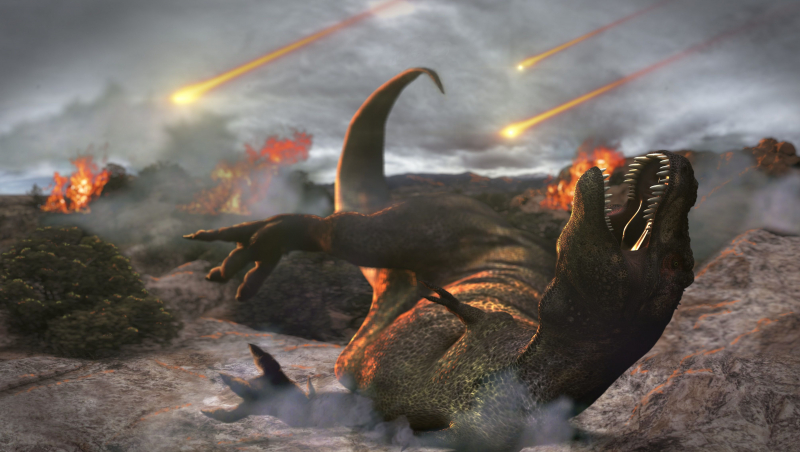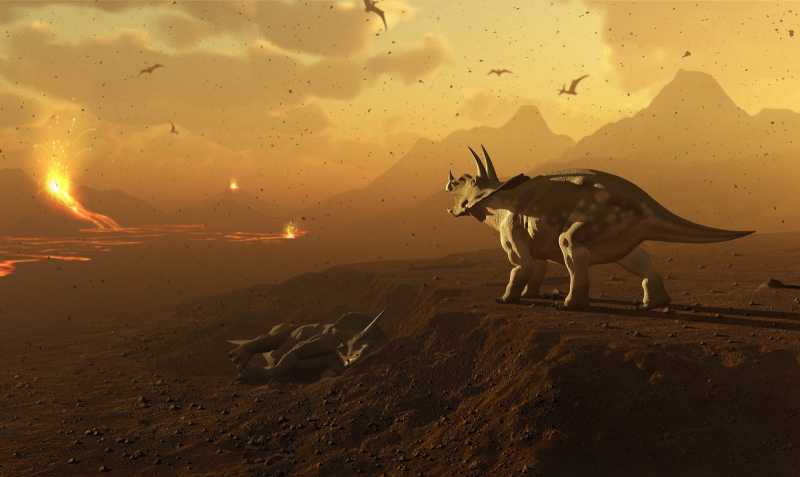Cretaceous-Paleogene extinction

The Cretaceous-Paleogene extinction event, which occurred roughly 66 million years ago, resulted in the loss of three-quarters of all plant and animal species on Earth. No tetrapods weighing greater than 25 kilos survived, with the exception of select ectothermic species such as sea turtles and crocodilians. It signaled the end of the Cretaceous Period and, with it, the Mesozoic period, while also ushering in the Cenozoic era, which continues to the present day.
As a result, mammals and birds (avian dinosaurs!) dominated the land. The overwhelming scientific agreement is that the major cause of the extinction was the impact of a massive extraterrestrial object. An asteroid fragment with an estimated diameter of 10 kilometers (6.2 miles) collided with Earth, unleashing massive waves of heat, dust, and soot over the world. The flying soot obscured sunlight, causing ecosystems to fail. A large impact crater in the Yucatán Peninsula in northern Central America is the major evidence of this event.
However, the extinction brought evolutionary opportunities: in its aftermath, several groups saw exceptional adaptive radiation—rapid and prolific divergence into new forms and species within damaged and empty ecological niches. Mammals, in particular, evolved novel forms throughout the Paleogene, including horses, whales, bats, and primates. Avians, a few species of ground and water fowl that radiated into all present bird species, were the only dinosaurs that survived. Teleost fish and maybe lizards were among the other taxa that radiated.







